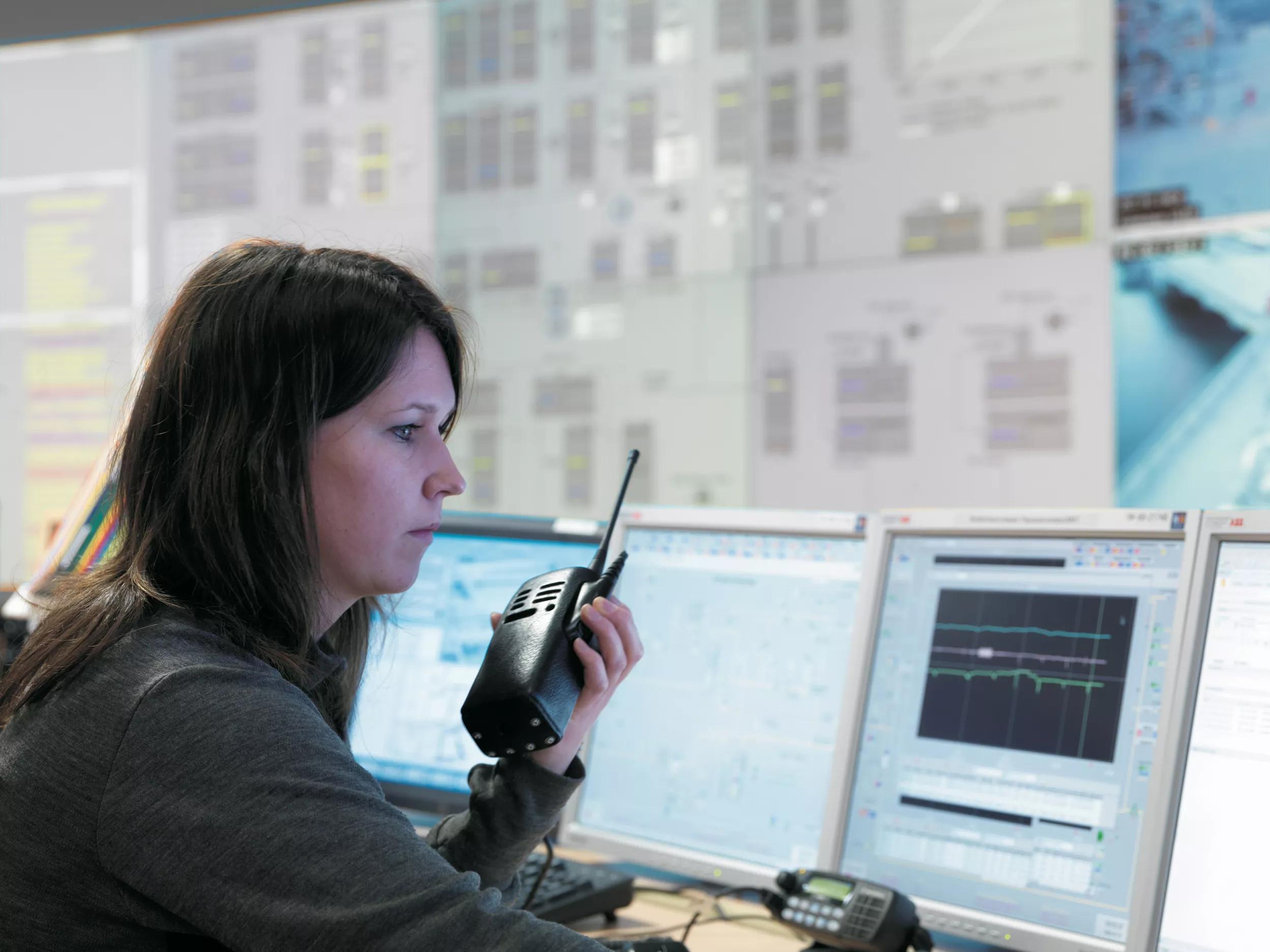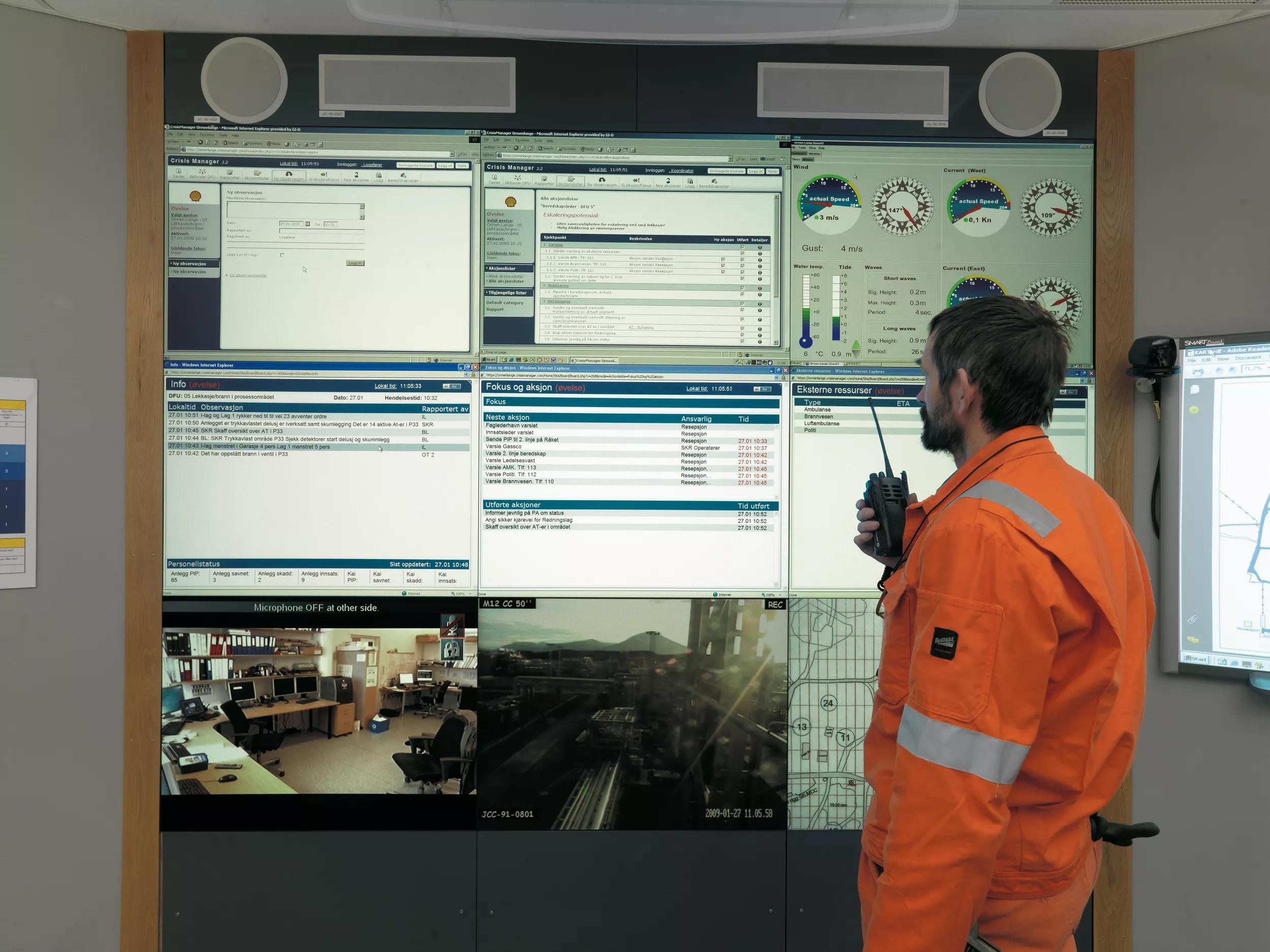Précédent
7 déc. 2021
How Barco helps oil & gas control rooms deal with change
4 min de lecture
Oil and gas control rooms are bracing themselves for important changes in the industry. Dealing with change is always hard, but control room managers can already make important technology choices to make transitions much smoother.
The oil & gas industry is going through unprecedented fluctuations. Not only is the COVID-19 pandemic causing significant disruption to the global refining market, but the transition to renewable energy is accelerating globally as well, forcing oil & gas companies to reduce costs or even review their business models.
At the same time, the industry is challenged to accelerate digital transformation, in an effort to reduce operating costs, offer better customer service, and maintain flexibility. Digital technologies are expected to play an important role in making energy systems around the world more connected, intelligent, efficient, reliable and sustainable.
Coping with change
 Whether oil & gas companies need to consolidate, expand, or transform, change seems to be the only constant in the industry today.
Whether oil & gas companies need to consolidate, expand, or transform, change seems to be the only constant in the industry today.
In the light of these market conditions, utility control room organizations need to keep their operations going, reduce costs, and streamline operations for their increasingly burdened operator workforce. Not an easy task.
As control room operations need to be adapted to the reigning market conditions, an important question arises: which technologies are needed to smoothen the transition and maybe even make operations robust for future changes? We see three important trends.
1. Technology to transition smoothly
In an effort to cope with constant change, control rooms are transforming more and more into fully networked environments. By making use of the LAN or WAN, visual information can be sent to operators and other users wherever they are connected. By using standard networks instead of traditional AV equipment, control rooms can scale and adapt almost without limits.
Organizational changes often force control room operators to transition from one control system to another. Networked visualization solutions, like Barco’s Transform N CMS make this transition much easier and enable operators to work with different systems at the same time. By adding a visual layer on top of the control system, operators do not interact with the system data itself, but with the visual representation layer (user interface) on top of it, making it easier for them to work with different data types and systems.
2. Technology to view ergonomically
 Today’s control room operators already need to handle a variety of data sources and sensor types. But when organizational changes happen, they often need to take on additional responsibilities or combine different control systems or SCADA platforms. The challenge for control room integrators is then to provide an intuitive and ergonomic way for operators to view and interact with this multitude of sources in the same workspace and on the same screen, whether these sources are coming from legacy AV applications or IP-based systems.
Today’s control room operators already need to handle a variety of data sources and sensor types. But when organizational changes happen, they often need to take on additional responsibilities or combine different control systems or SCADA platforms. The challenge for control room integrators is then to provide an intuitive and ergonomic way for operators to view and interact with this multitude of sources in the same workspace and on the same screen, whether these sources are coming from legacy AV applications or IP-based systems.
Operator workspace solutions like Barco’s OpSpace enable operators to visualize all critical sources in a single pixel space and control them with a single keyboard and mouse. Old and new control systems can easily live on the same screen side by side, allowing operators to train themselves and gradually transition from one platform to another.
3. Technology to scale securely
Whether oil and gas companies need to incorporate additional renewable energy monitoring applications or consolidate different control systems in one operator view, the workspace and common operational picture are likely to become more crowded and more complex. At the same time, while organizations are changing, information needs to be visualized and shared securely across an increasing number of global sites and experts.
Networked visualization allows content to be sent anywhere in a secure way. Operators don’t even need to be physically present with the back-end systems that host the content. Fully in line with control room security regulations, all necessary server hardware can be stored in a separate server room.
And with a workspace solution like OpSpace, operators can securely mix OT sources and other content sources, such as weather information, social media, and news, on the same pixel space. The system provides secure access to hosts across multiple security domains, integrating only at the presentation layer. Granular access control (based on users and roles) ensures that operators see only the data that are relevant to their job.
We support your transition
 Renewable energy, digital transformation, and the ubiquity of data: these trends are manifest. That’s why control room managers need to make smart technology choices today. At Barco, we are convinced that we can help you make your modernization process much smoother and your control room technology more future-proof.
Renewable energy, digital transformation, and the ubiquity of data: these trends are manifest. That’s why control room managers need to make smart technology choices today. At Barco, we are convinced that we can help you make your modernization process much smoother and your control room technology more future-proof.
Want to know more? Then discover our control room solutions for utilities or get in touch with a Barco expert.
